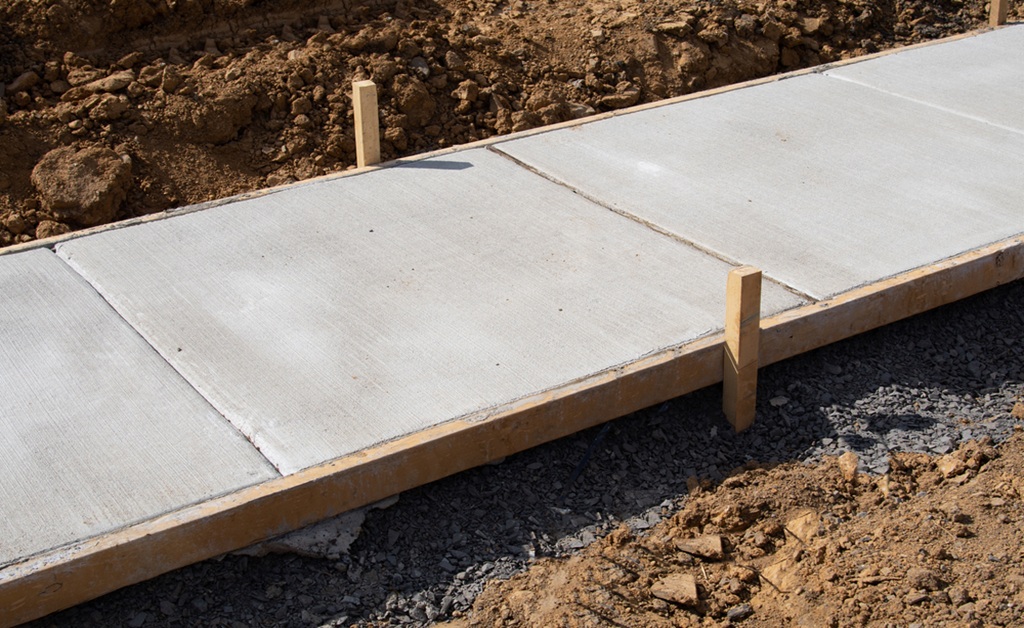Applying sealer to your concrete is one of the smartest things that you can ever do to your concrete surfaces. Sealing concrete such as sealing a brand-new walkway, patio, or driveway prevents the concrete from rain damage, staining, and overall wear and tear from normal usage. But it is hard to tell how long after sealing concrete can you walk on it, and it will ruin your investment if done too early.
The short answer is that all concrete sealers are ready for light foot traffic in 4 to 8 hours, but there are some important details to the tale that all property owners are well advised to know before doing their sealing project. When you choose a professional like Bill’s Custom Concrete, we’ll provide all the advice you need to avoid a disaster!
Concrete Sealer Drying Period
Several environmental and product-related variables determine how fast the concrete sealer effectively cures and dries.
Temperature is Key
Warmth is the biggest contributor to the drying time for concrete sealer. The warmer it is, the quicker the chemical reactions to dry sealers down to a hard finish. The colder it is, the longer it will take. A majority of sealers perform their best when it is 50°F to 90°F. You should be able to dry enough for foot traffic on 85°F summer concrete within 2 to 4 hours. Temps below 60°F may take 8 to 12 hours, or longer.
Humidity Levels Affect Curing
Humid air will tend to greatly increase drying times, since the resulting moisture impedes adequate curing of the sealer. 6 hours on normal days may turn into 10 to 12 hours on humid days. Low humidity in the air plus adequate air movement reduce drying times on sealers.
Type of Sealer
The sealer type used largely impacts concrete sealer dry time. The fastest drying is performed by acrylic water-based sealers, with some permitting foot traffic after 4 to 6 hours of drying. Solvent-based sealers permit foot traffic after a 6 to 8-hour wait. Polyurethane and epoxy sealers owing to their hardness require a 12 to 24-hour wait before being able to accommodate foot traffic.
How to Check if Your Concrete Sealer is Dry
Rather than assume the sealer has dried, use these easy methods to ensure that it is sufficiently dry for foot traffic.
The Touch Test
Gently press an unseen part of the closed surface using the fingertip. Should the sealer stick or deposit any material on the fingers, it requires additional drying time. A properly dried sealer should be smooth on the fingers and dry.
Visual Inspection
New sealer will seem shiny and watery-looking and will even out over time as it cures. Inspect any spots that continue to be darker or shinier than the balance of the surface, since these areas most likely require a little extra curing time.
Paper Test
Place a small sheet of paper on the surface for a brief period of time. If the paper sticks or picks up any sealer upon its removal, the surface isn’t yet ready for pedestrian use.
Planning Your Sealing Project for Success
Precise timing avoids issues and gives you your optimum outcome on any concrete sealer job. Observe the weather and select a day with a moderate temperature and low humidity. Coat the concrete when no rain is forecast in the 24-hour period thereafter, as moisture can impede proper curing.
Start sealing early in the morning so that the sealer has the maximum amount of time to dry before temperatures drop by evening. This will also ensure that you will not have to cross the surface during the critical early cure time.
Keep in mind that although most sealers can withstand foot traffic 4-8 hours after the application was done, the complete curing can take 24-48 hours. Avoid placing heavy objects or driving vehicles on the floor finish prior to the sealer curing based on the instructions.
How long does it take for concrete sealer to dry? Choose Bill’s Custom Concrete as one of the best concrete contractors in Edmond, OK, to save yourself the stress and hassle. Our experienced professionals will handle everything for you!





